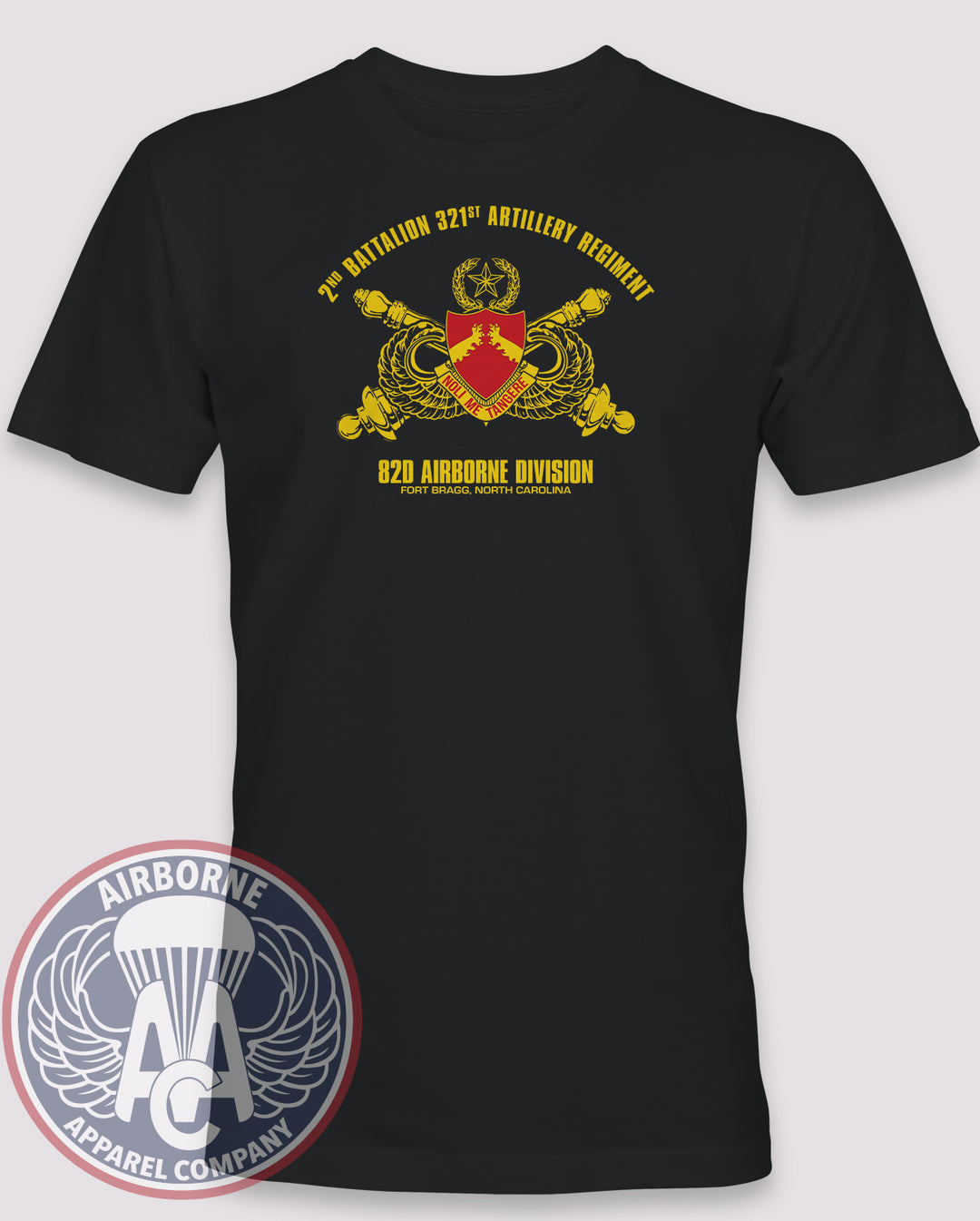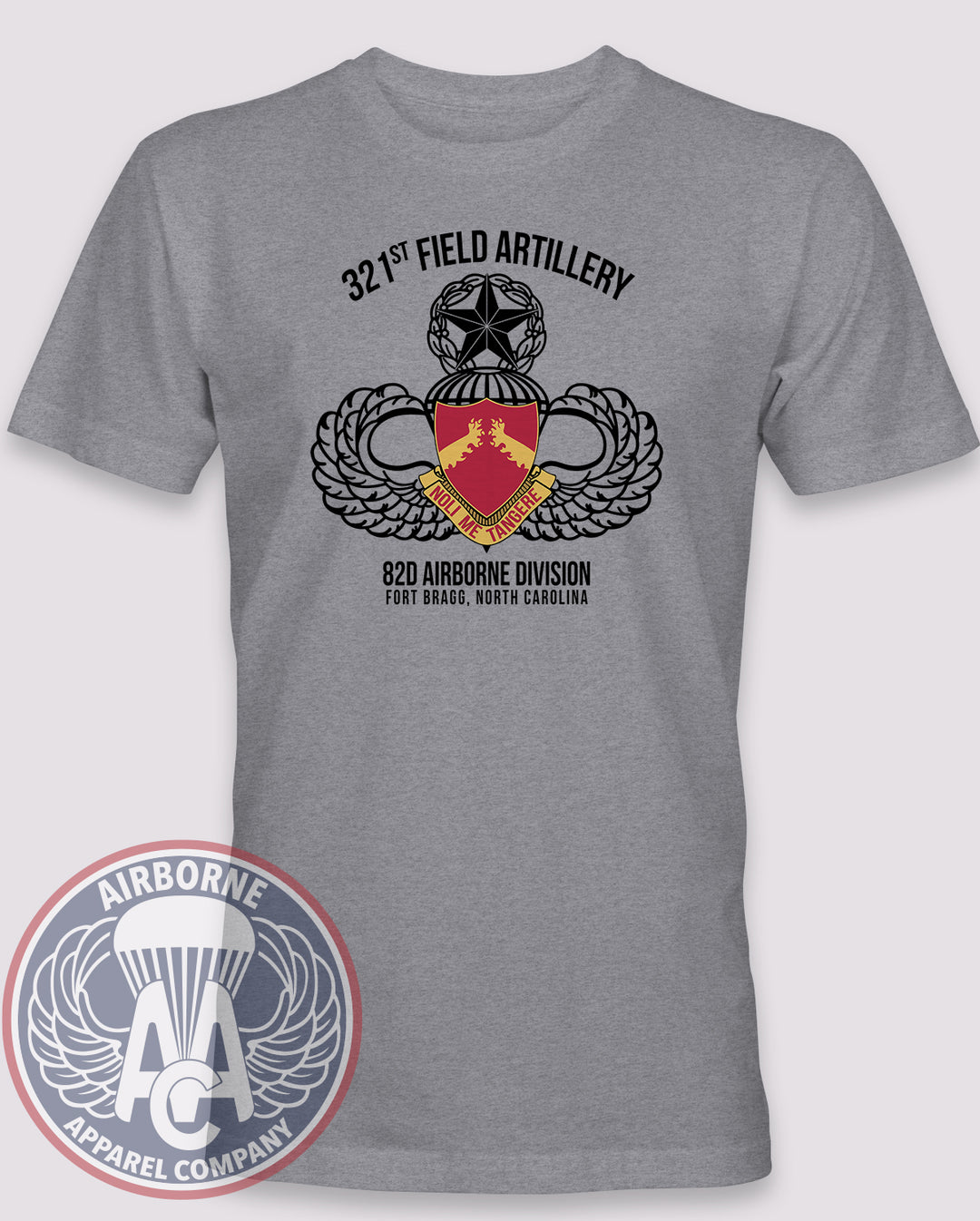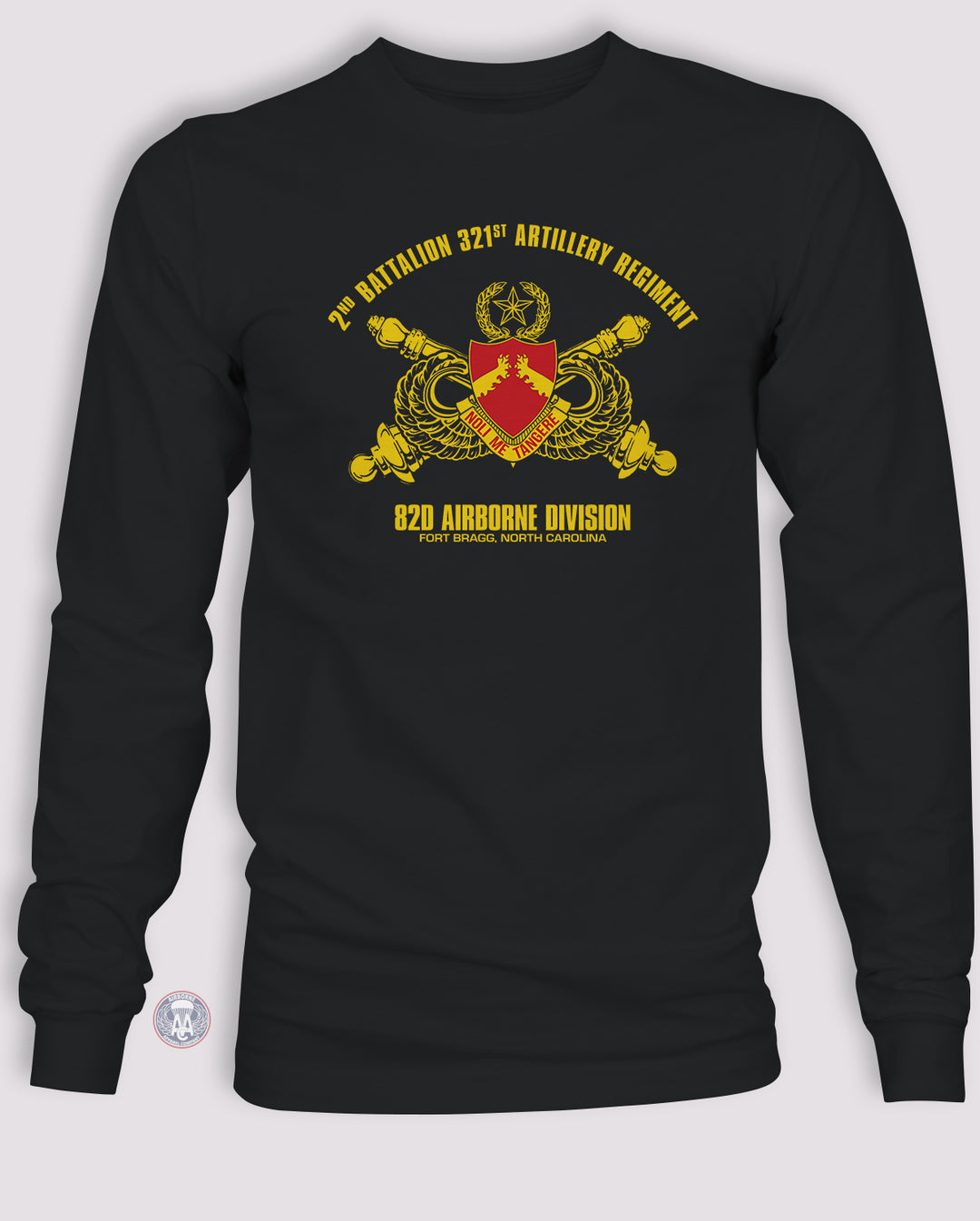The 321st Airborne Field Artillery Regiment (AFAR) provided airborne fire support for both the 82nd Airborne Division and the 101st Airborne Division, with combat glider and parachute insertions in Normandy, Holland, Bastogne, and beyond. Though no longer active as a regiment, its legacy as “Wings of Fire” endures. Airborne Apparel Company is proud to offer reproductions and unique designs that celebrate the legacy of the 321st Airborne Field Artillery Regiment.
The 321st Field Artillery Regiment was first constituted in 1917 and assigned to the 82nd Division during World War I. In France, its artillerymen provided indirect fire support in major offensives, including St. Mihiel and the Meuse-Argonne, establishing the regiment’s combat lineage.
World War II – Glider & Airborne Artillery
Reorganized as the 321st Glider Field Artillery Battalion, the unit was assigned to the 101st Airborne Division. Its gunners fought in every major airborne operation of the division:
-
Normandy (D-Day, June 1944): Glider-borne artillery supported the 101st’s defense of Carentan and the Cotentin Peninsula.
-
Operation Market Garden (Holland, Sept 1944): Landed by glider to provide fire support for the division’s push along “Hell’s Highway.”
-
Battle of the Bulge (Bastogne, Dec 1944): The 321st’s howitzers fired almost continuously during the siege, breaking up German assaults and helping the 101st hold the line until relief arrived.
The battalion earned multiple unit citations for its extraordinary performance under fire, particularly at Bastogne, where its fire support was decisive.
Post-War & Cold War Service
After World War II, the 321st underwent several reorganizations. Elements were activated at Fort Bragg and later Fort Campbell, providing artillery support to airborne and air assault forces during the Cold War.
Vietnam & Later Deployments
Battalions of the 321st served in Vietnam, where they provided artillery support to the 101st Airborne Division (Airmobile). Its howitzers supported infantry operations in rugged terrain, contributing to the division’s combat record in Southeast Asia.
Inactivation & Legacy
The 321st AFAR was eventually inactivated as a regiment, though its lineage carried forward in elements aligned with the 18th Field Artillery Brigade at Fort Bragg and with airborne artillery units of the 101st. While not currently active as a named regiment, its heritage of airborne artillery excellence is recognized within Army lineage and honors.
Identity & Legacy
-
Motto: “Noli Me Tangere” — “Touch Me Not.”
-
Nickname: Sometimes referred to as the “Wings of Fire” for its airborne artillery role.
-
Distinctive Role: Glider-borne artillery of the 101st Airborne in WWII; later parachute and air-mobile capable in Vietnam and beyond.
-
Honors: Presidential Unit Citation for Bastogne; French Croix de Guerre with Palm; Belgian Fourragère.
-
Notable Service: The regiment’s batteries are remembered as a decisive force in the defense of Bastogne, one of the most legendary stands in U.S. airborne history.
Enduring Significance
The 321st Airborne Field Artillery Regiment was among the units that proved airborne artillery could fight as hard and effectively as any infantry formation. From glider landings on D-Day to round-the-clock fire at Bastogne, its artillerymen ensured America’s paratroopers could seize, hold, and survive. Though inactive today, its history remains woven into the fabric of the airborne.
Airborne Apparel Company is proud to offer reproductions and unique designs that celebrate the legacy of the 321st Airborne Field Artillery Regiment.









